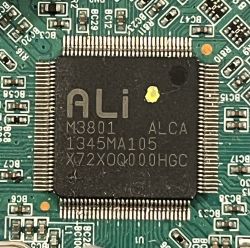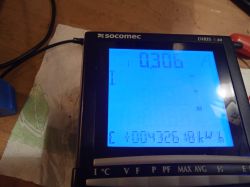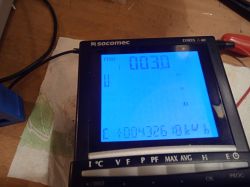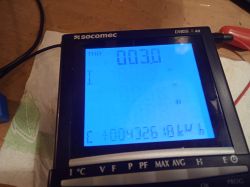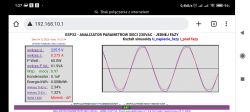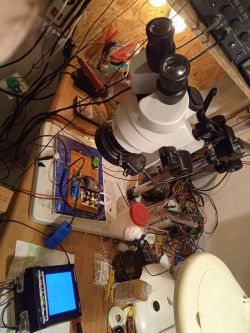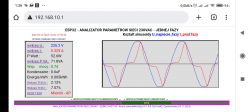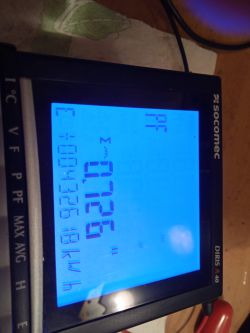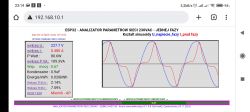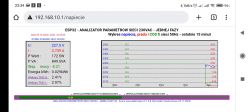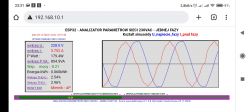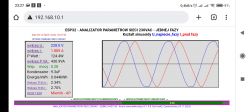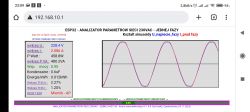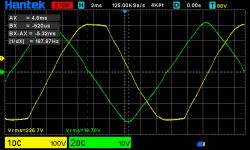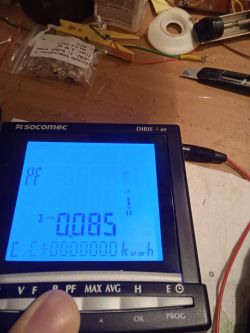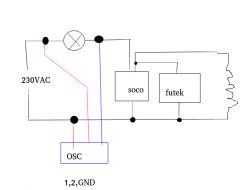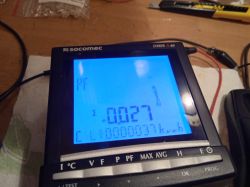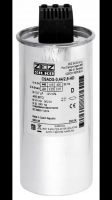I built it too.
I spent a week collecting the necessary parts. I had a current transformer from another unfinished project, but it was 100A 50mA, without a built-in resistor, you had to add a 20 ohm resistor in parallel to make it work.
The voltage transformer is tv16E, supposedly more accurate, there was no delivery of the blue one in a reasonable time on the Polish auction site.
5V 2A power supply pulled from some plug-in power supply.
housing will be.
The ESP32 board is the same as recommended by the author. I uploaded the batch with the ESP-Flasher-x86.exe program, which weighs 12M. It worked right away, I mean ESP without measuring.
After soldering on the universal plate (I will not boast about its bottom part ), the measurement was strange, the sine wave of the voltage was only in the negative part, and there was no current measurement at all. MY MISTAKE was not connecting the ESP ground leg with the rest of the system. After connecting and calibrating everything started.
), the measurement was strange, the sine wave of the voltage was only in the negative part, and there was no current measurement at all. MY MISTAKE was not connecting the ESP ground leg with the rest of the system. After connecting and calibrating everything started.
I made the calibration on the dryer and the boiler, using the meter from the photo. :(
I also managed to connect to my home router, not right away, I didn't read that you have to enter the server address to send these three characters, then it saves.
You have to hurry a bit when logging in admin admin, because the page reloads.
The last photo shows the work of the laptop with the game AOE4 in the background. There are plans to connect the whole apartment (1 phase, pre-meter B40, accumulation stoves, boiler, induction hob).
As for the reactive power, I have a constant flow of about 1A (measured with another device) from the induction hob on standby, I guess it is capacitive power, so far the ZE meter does not count it - I checked, but we live in interesting dynamic times and who knows when you will have to pay for it, someone will tell you whether companies are currently paying for power with capacity? The question is what to connect to eliminate it, some choke?
As for the expansion of the system, it would be useful:
- controlling the relays, as the author mentioned, from capacitors or switching on subsequent loads, according to, for example, the available contractual power, or the voltage approaching 253 for FV fans.
- maybe controlling the hd44780 i2c lcd display with basic data
There can be hundreds of ideas.
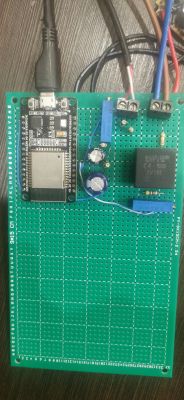
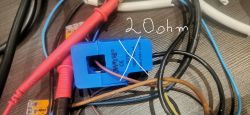
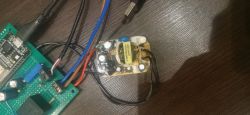
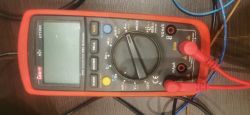
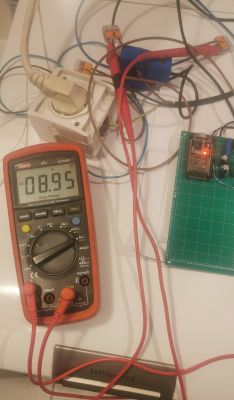
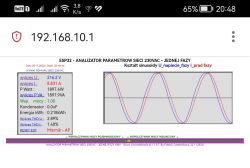

I spent a week collecting the necessary parts. I had a current transformer from another unfinished project, but it was 100A 50mA, without a built-in resistor, you had to add a 20 ohm resistor in parallel to make it work.
The voltage transformer is tv16E, supposedly more accurate, there was no delivery of the blue one in a reasonable time on the Polish auction site.
5V 2A power supply pulled from some plug-in power supply.
housing will be.
The ESP32 board is the same as recommended by the author. I uploaded the batch with the ESP-Flasher-x86.exe program, which weighs 12M. It worked right away, I mean ESP without measuring.
After soldering on the universal plate (I will not boast about its bottom part
I made the calibration on the dryer and the boiler, using the meter from the photo. :(
I also managed to connect to my home router, not right away, I didn't read that you have to enter the server address to send these three characters, then it saves.
You have to hurry a bit when logging in admin admin, because the page reloads.
The last photo shows the work of the laptop with the game AOE4 in the background. There are plans to connect the whole apartment (1 phase, pre-meter B40, accumulation stoves, boiler, induction hob).
As for the reactive power, I have a constant flow of about 1A (measured with another device) from the induction hob on standby, I guess it is capacitive power, so far the ZE meter does not count it - I checked, but we live in interesting dynamic times and who knows when you will have to pay for it, someone will tell you whether companies are currently paying for power with capacity? The question is what to connect to eliminate it, some choke?
As for the expansion of the system, it would be useful:
- controlling the relays, as the author mentioned, from capacitors or switching on subsequent loads, according to, for example, the available contractual power, or the voltage approaching 253 for FV fans.
- maybe controlling the hd44780 i2c lcd display with basic data
There can be hundreds of ideas.










